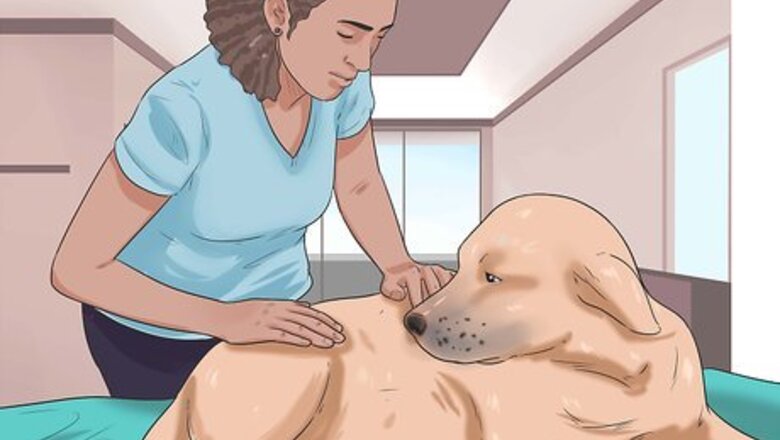
views
X
Research source
While you may be inclined to ignore or block out possible warning signs, it is important to be vigilant and alert for changes in your pet's behavior or health. Paying attention to an early warning sign could mean that the cancer is caught early. Early detection puts your veterinarian in a strong position to treat the problem and gives your dog an excellent chance of survival.[2]
X
Research source
Looking for Lumps
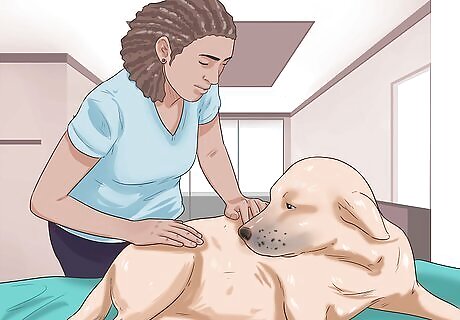
Check your dog over regularly for lumps and bumps on the skin's surface or just under the skin. The goal here is early detection of any tumors that could be associated with cancer. Grooming your dog is a great chance to become familiar with what's normal for its body. Don't panic if you find a lump. The lump could be a wide variety of things, from a harmless spot or mole to a more serious, aggressive cancer.
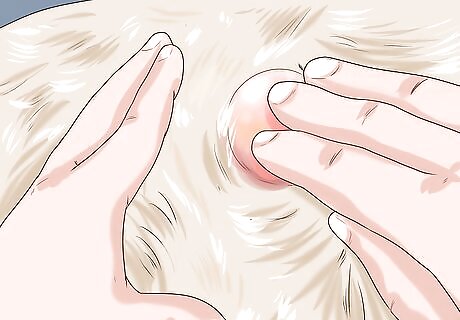
Assess the lump. Check the size and shape of the lump. Measure the size of the lump and write it down with the date for future comparison. How deep is the lump? Feel the lump and see if it seems to be in the skin, beneath the skin, or attaching the skin to the tissue beneath. What shape is the lump? Is the lump round or does it have an irregular shape. Irregular lumps should always be checked urgently by a veterinarian. How quickly is it growing? It is best to get any new lumps checked but if you are unable to get to a vet straight away, monitor the lump. Measure it weekly to see if it is enlarging. A rapidly growing lump needs urgent attention. Is it painful or itchy? If the lump is red, inflamed, or the dog itches or chews at it, this is an important sign that it needs checking urgently by your veterinarian.
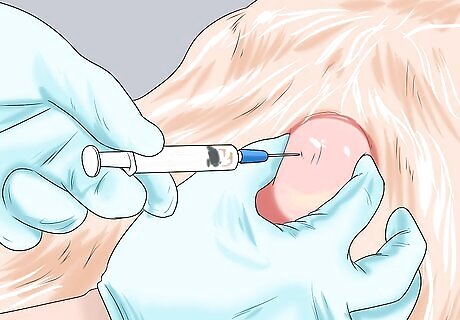
Have lumps checked out by a veterinarian. They can perform a fine needle aspirate, to obtain a small sample of cells to examine under the microscope. Sometimes this is sufficient to make a diagnosis, but failing this a full biopsy may be necessary to know exactly what the lump is. Some lumps are judged to be of lower risk than others, these tend to have the following characteristics (although it should be noted some more serious lumps can also mimic these signs) : Round, growing on the skin, the skin remains free and not attached to tissue below, slow growing, not sore or inflamed. Higher risk lumps often have one or more of the following characteristics: irregular shape, rapid growing, deeply attaching the skin of the tissues beneath, inflamed itchy or painful.
Looking for Physical Changes

Look for lameness or limping. A dog can become lame for many reasons, ranging from a simple sprain or a cut pad all the way to cancer. Take your dog to the vet if it has any lameness, as limping is a sign of pain. Your vet should be able to determine what the cause of the pain is. Bone cancers, such as osteosarcoma, are acutely painful and the dog may be in discomfort when you touch the area. The area may be swollen and feel hot to the touch. Signs associated with bone cancer also include restlessness (as though in a lot of discomfort), a low grade lameness that gets worse rather than better, and loss of appetite.
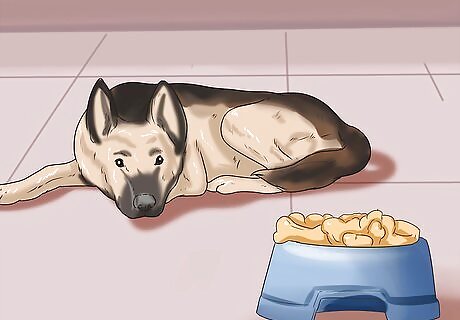
Determine if your dog has lost weight or lost its appetite. Again there are multiple causes of weight loss and poor appetite, ranging all the way from a change of diet or food the dog doesn't like, to kidney disease or cancer. Any weight loss should trigger a trip to the vet, but this is especially important if the dog seems dull, lacking in energy, and generally not itself. Symptoms tend to develop gradually with a slow loss of appetite and loss of body condition. This is also reflected in the dog taking less care of itself, and grooming less. This lack of proper grooming leads to a dull coat. Sometimes the dog may also vomit on and off. Take careful note of the dog's bowel movements, as this can give the veterinarian vital clues to what's going on.
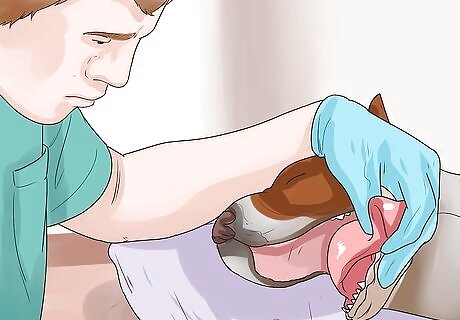
Pay attention to unusually bad smells coming from the dog. Give the dog a good sniff over to try and localize the smell. Sometimes a hidden tumor, such as a melanoma in the mouth, is not easy to see but it may become infected and start to smell. Of course, there are other common infections that also smell and are usually not serious (but do need treatment). It's a good idea that if you detect a bad smell you should check in with a vet about it.
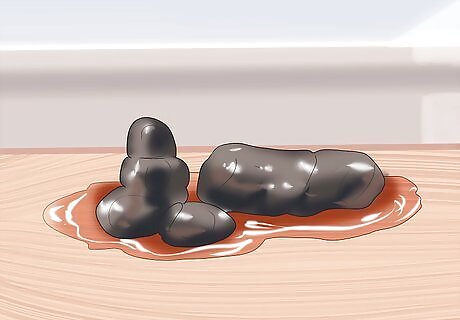
Look for bleeding or blood in urine or feces. Regular nosebleeds, bleeding from the gums, and bleeding excessively from small cuts all require urgent veterinary attention. One explanation is cancer, but other diseases, such as autoimmune disease, can interfere the body's ability to clot blood. Take note of blood in urine, feces, or vomit. Again, there may be an innocent explanation, such as cystitis or colitis, but these conditions also need treatment.

Get veterinary care for a dog that is coughing or having difficulty breathing. Coughing can result from infection, bronchitis, heart disease or cancer, among other possibilities. Watch your dog's breathing: rapid shallow breaths indicate abnormality and you should get the dog checked as a matter of urgency. In the meantime, rest the dog so that it doesn't have extra demands on its body's oxygen.

Pay attention to changes in behavior or character. Brain tumors can induce changes in behavior that are quite marked. Your dog may develop an unusual habit, nervous tick, or even seizures. If it starts to bump into things, lose its balance, or have difficult walking in a straight line this could indicate a neurological abnormality. This should be checked out by a vet.
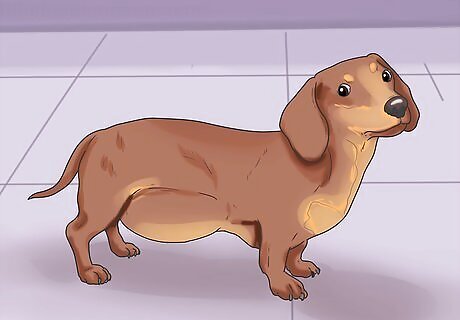
Notice changes to your dog's body shape. For example, notice if your pet's belly changes shape and becomes suddenly swollen. This could indicate an internal bleed and loss of blood within the abdomen, causing it to become distended. This could be due to a ruptured lump within the abdomen. Seek immediate veterinary attention in this situation.
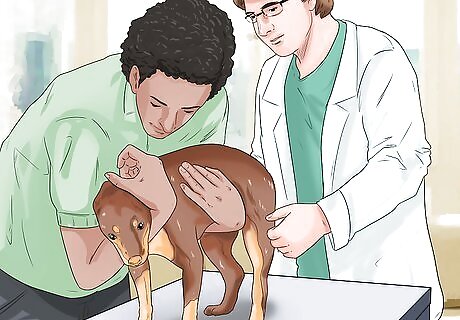
Have your dog checked out by a veterinarian if you have a suspicion that your dog has cancer. It is difficult, or even impossible, to know if your dog has cancer without diagnostic tests. Even veterinarians find it difficult to know for sure that a dog has cancer, without running diagnostic tests such as biopsies, diagnostic blood tests, or examining cells from the abnormal area. Seek a second opinion. This will give you a better idea about your options and will hopefully give you more peace of mind that your vet is making the best recommendations for treatment.
















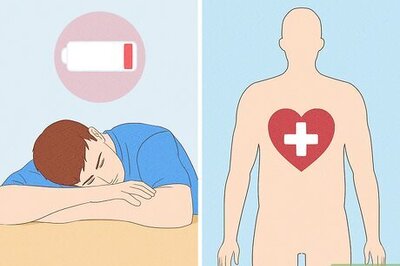



Comments
0 comment